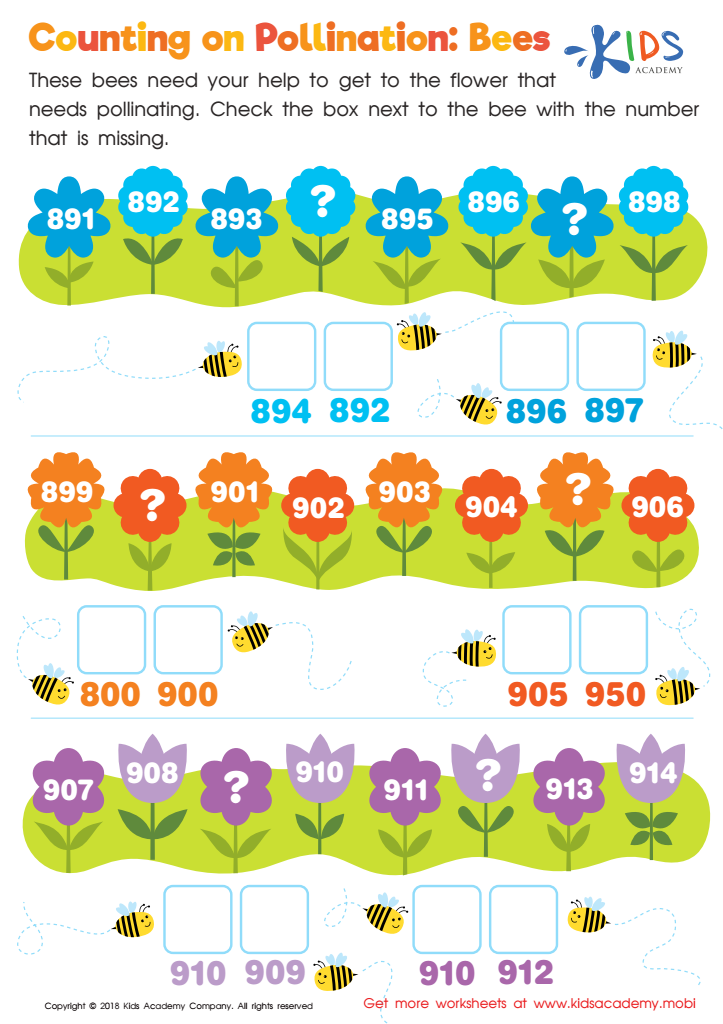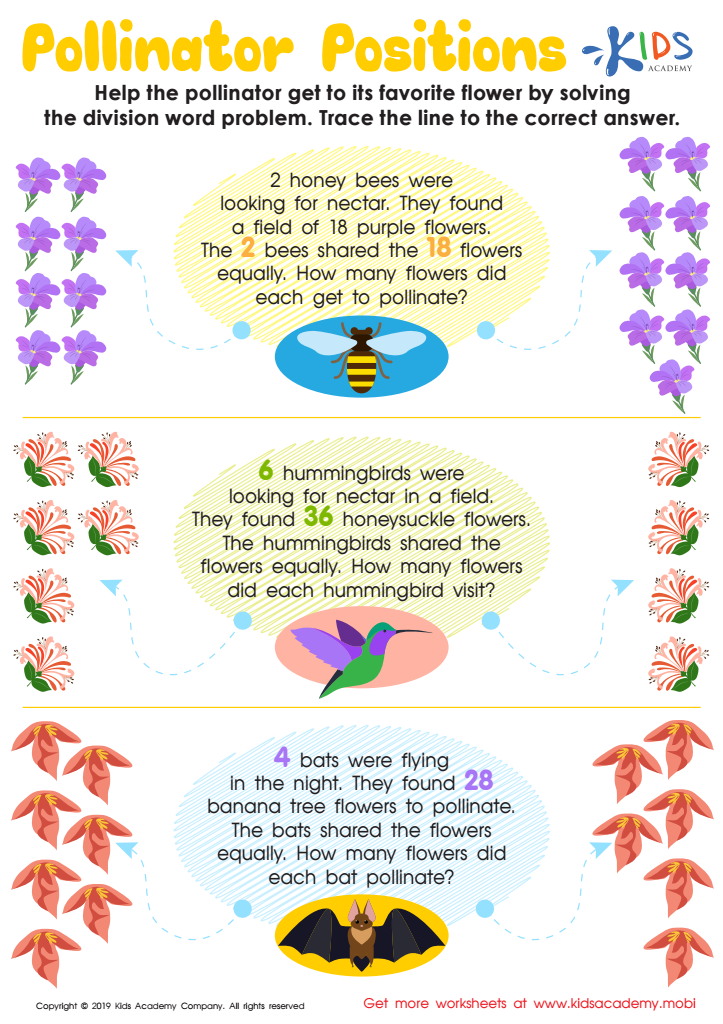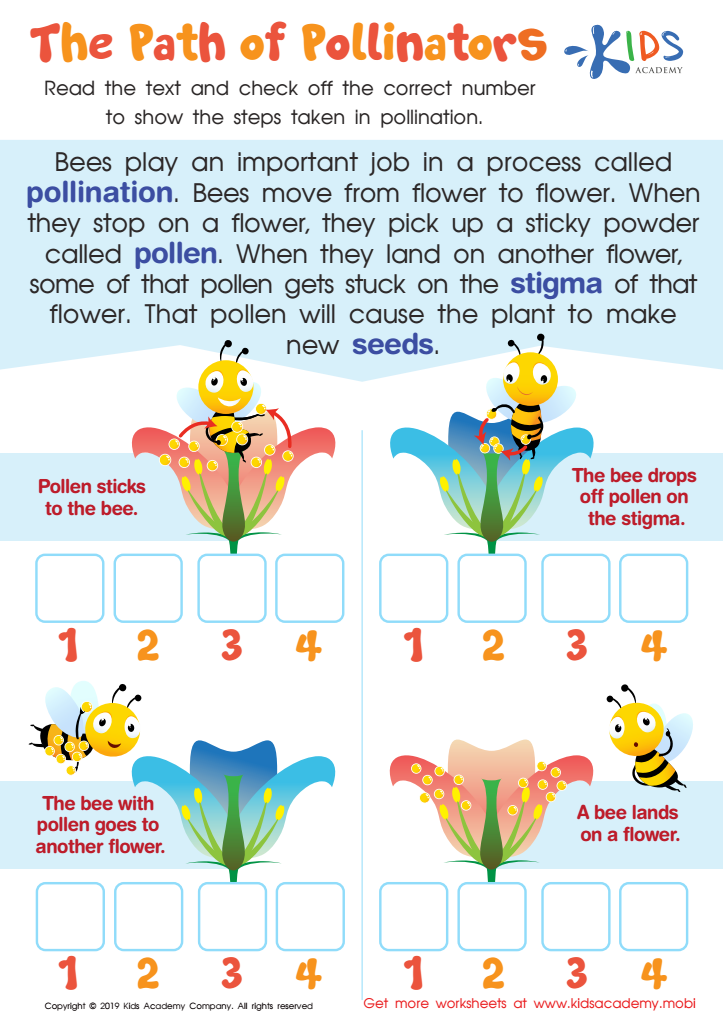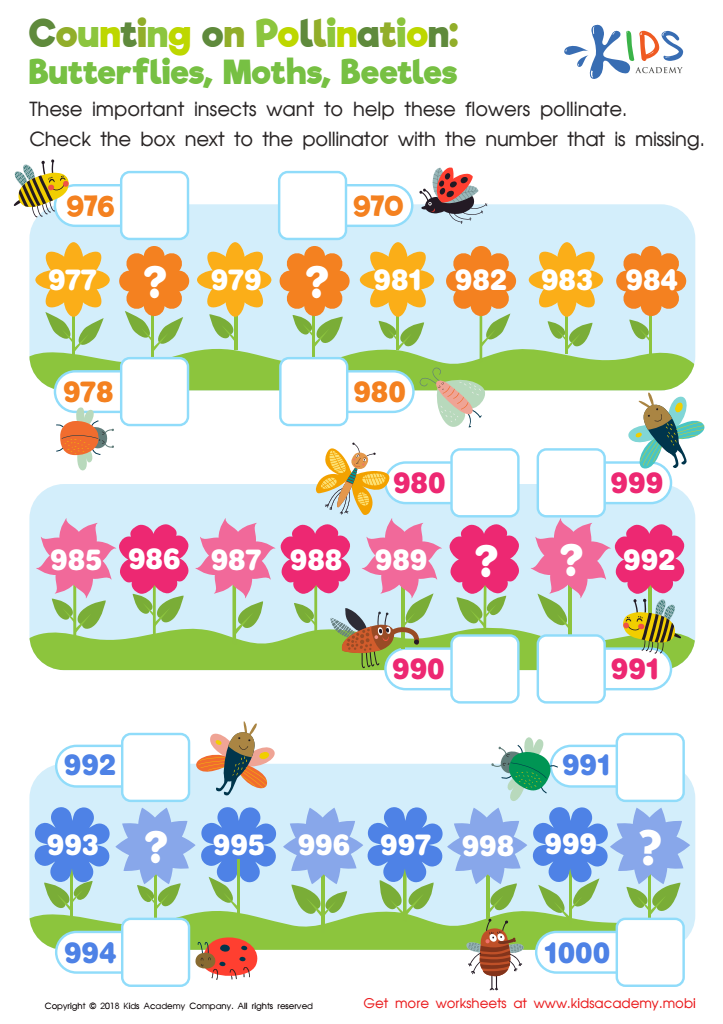Understanding pollination Normal Worksheets for Ages 6-7
4 filtered results
-
From - To
Explore the fascinating world of pollination with our engaging "Understanding Pollination Normal Worksheets" designed specifically for children aged 6-7. These worksheets offer a fun and interactive way to introduce young learners to the essential role of pollinators in nature, enhancing their understanding of plants and ecosystems. Through colorful illustrations and thought-provoking activities, kids will learn about various pollination methods, the importance of bees and other insects, and how flowers attract these helpful creatures. Perfect for classrooms or at-home learning, our worksheets encourage curiosity and promote environmental awareness in a playful format. Start your child's educational journey into the wonders of nature today!


Counting on Pollination: Bees Worksheet


Pollinator Positions Worksheet


The Path of Pollinators Worksheet


Counting on Pollination: Butterflies, Moths, Beetles Worksheet
Understanding pollination is important for young children because it helps them grasp how plants grow and how our food is produced. Pollination is a natural process where bees, butterflies, birds, and even the wind help transfer pollen from one flower to another. This is crucial for plants to make fruits, vegetables, and seeds.
Parents and teachers should care about teaching kids about pollination for several reasons. First, it fosters curiosity about nature, leading children to explore and appreciate the outdoors. This can help them develop a sense of responsibility toward the environment.
Second, early education about pollination encourages healthy eating habits. When children learn where their food comes from, they may be more inclined to try fruits and vegetables, understanding that they come from flowering plants that need pollinators.
Additionally, pollinators, like bees, are vital to our ecosystems. By teaching kids about their role, we nurture a generation that values conservation and understands the importance of protecting these creatures.
Overall, learning about pollination is not only fun but also essential for understanding our world, promoting healthy choices, and inspiring environmental stewardship in young minds.

 Assign to My Students
Assign to My Students






.jpg)









